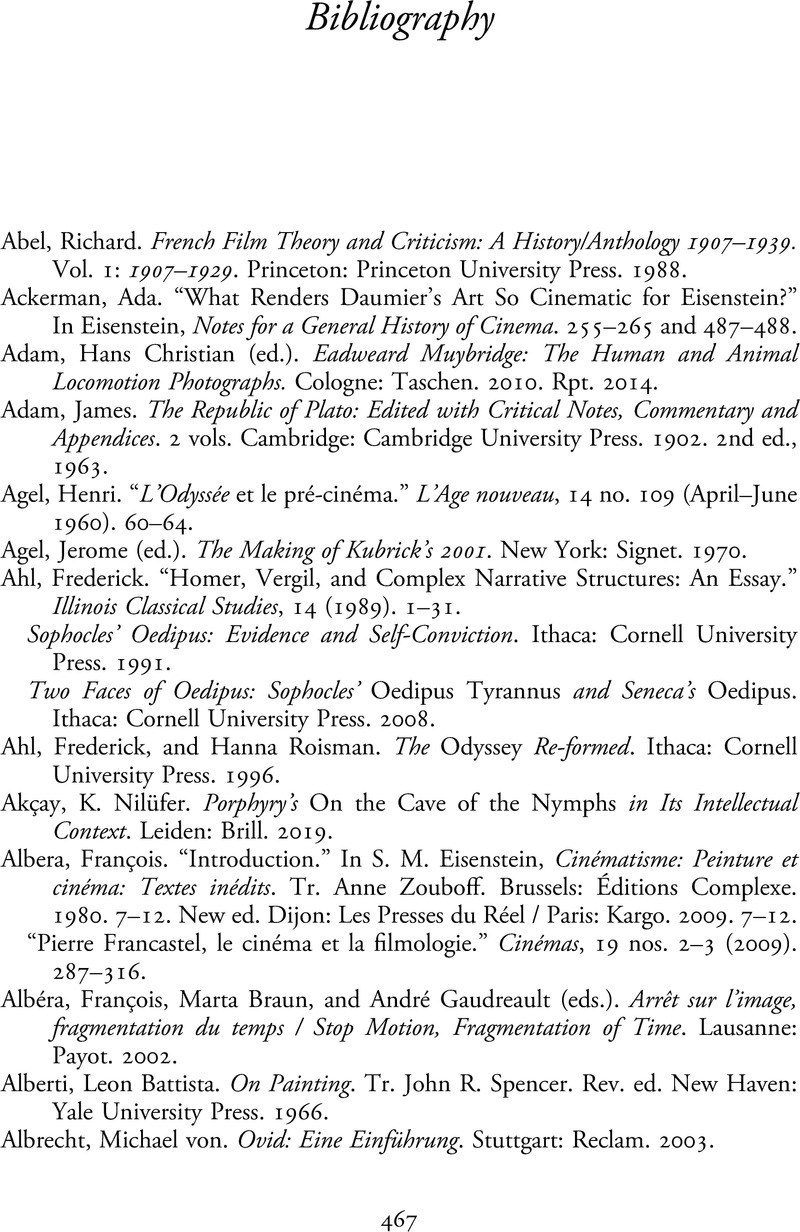Book contents
- Classical Antiquity and the Cinematic Imagination
- Classical Antiquity and the Cinematic Imagination
- Copyright page
- Dedication
- Contents
- Illustrations
- Preface
- I Prolegomena
- II Progymnasmata: Ways of Seeing
- III Complex Cinematism
- IV The Cinema Imagines Difficult Texts
- V Epilegomena
- Bibliography
- Index
- References
Bibliography
Published online by Cambridge University Press: 15 February 2024
- Classical Antiquity and the Cinematic Imagination
- Classical Antiquity and the Cinematic Imagination
- Copyright page
- Dedication
- Contents
- Illustrations
- Preface
- I Prolegomena
- II Progymnasmata: Ways of Seeing
- III Complex Cinematism
- IV The Cinema Imagines Difficult Texts
- V Epilegomena
- Bibliography
- Index
- References
Summary

- Type
- Chapter
- Information
- Classical Antiquity and the Cinematic Imagination , pp. 467 - 523Publisher: Cambridge University PressPrint publication year: 2024

